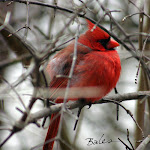
•
OK. Call me an old softie, but I’ve always had a tender spot in my heart for Polyphemus, the one-eyed Cyclopes in Homer’s “Odyssey.” It’s the same sort of warm, fuzzy feeling I have for Frankenstein’s monster, King Kong and Quasimodo—Victor Hugo’s bell-ringing hunchback. Don’t we all? After all, they were benevolent, misunderstood outcasts; gentle giants forced to violence by our exclusionary society.
If you remember Homer’s story, Odysseus (Ulysses in Latin) was a Greek hero and King of Ithaca, who took ten years to come home after the Trojan War. Along the way he had many adventures. During one of these, Odysseus and a scouting party landed on the Island of the Cyclopes and slipped into the cave of Polyphemus, stealing some of his food and ultimately blinding his one good eye.
Odysseus and his men sneak out of the cave by tying themselves to the bottom of the giant’s sheep. Because he was now blind, Polyphemus didn’t notice the subterfuge. The Ithacans got away and were crowned heroes, while Polyphemus was left sightless. Where’s the justice in that?
Perhaps then, as a bit of payback, this week I came to the rescue of another Polyphemus.
One evening after work, I discovered three teenage boys throwing things at a brown spot high on a block wall of a neighborhood supermarket. Going to investigate, I discovered they were harassing a large winged insect.
“What are you throwing at?” I asked.
“A bug,” one answered in their defense.
“A bug? What kind of bug?” I inquired. I was wearing my Ijams Nature Center staff shirt, so I looked official.
Inspecting it closer, I announced that their target was a male
Polyphemus moth, probably in search of a female.
The boys could relate to his quest, even sympathize with it and helped me catch it.
Polyphemus moths are tan-colored giant silk moths. They have an average wingspan of six inches and their most notable features are large, purplish eyespots on their hind wings. Because of these eyespots the nocturnal giants are named in honor of Homer’s Cyclops but the obvious markings are of no help in finding a mate because they are active at night, using their sense of smell to locate females instead. As caterpillars, they are Herculean eaters, consuming up to 86,000 times their weight in a little less than two months. But as winged adults, they do not even have mouths; their eating days are over. Reproduce is the only thing on their little lepidopteron brains.
Bringing it home, I released the large moth into the safety of my woods but not before I took its photo.
•








































































